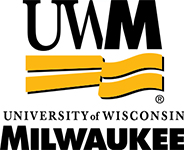High concordance from independent studies by the Children's Cancer Group (CCG) and Pediatric Oncology Group (POG) associating favorable prognosis with combined trisomies 4, 10, and 17 in children with NCI Standard-Risk B-precursor Acute Lymphoblastic Leukemia: a Children's Oncology Group (COG) initiative. Leukemia 2005 May;19(5):734-40
Date
03/25/2005Pubmed ID
15789069DOI
10.1038/sj.leu.2403673Scopus ID
2-s2.0-20844436312 (requires institutional sign-in at Scopus site) 146 CitationsAbstract
Chromosome aberrations have a major role in pediatric acute lymphoblastic leukemia (ALL) risk assignment. The Children's Cancer Group (CCG) and the Pediatric Oncology Group (POG) independently assessed the significance of trisomy for chromosomes 4, 10, and 17 in National Cancer Institute (NCI) Standard- and High-Risk ALL. Data from 1582 (CCG) and 3902 (POG) patients were analyzed. Eight-year event-free survivals (EFS) of 91% (CCG) and 89% (POG) (P < 0.001) were achieved in patients assigned to NCI Standard Risk whose leukemic cells had simultaneous trisomies 4, 10, and 17. Both groups showed the degree of favorable prognostic importance increased with the actual number of favorable trisomies. POG analyses also demonstrated hyperdiploidy (> or =53 chromosomes) was less of an independently significant prognostic factor in the absence of these key trisomies. This finding supported conclusions from previous CCG and POG studies that specific trisomies are more important than chromosome number in predicting outcome in pediatric B-precursor ALL. In NCI Higher Risk patients, the number of favorable trisomies was not prognostically significant, but showed the same trend. Moreover, specific trisomies 4, 10, and 17 remain associated with favorable prognosis in Standard-Risk B-precursor ALL, even in the context of very different treatment approaches between the groups.
Author List
Sutcliffe MJ, Shuster JJ, Sather HN, Camitta BM, Pullen J, Schultz KR, Borowitz MJ, Gaynon PS, Carroll AJ, Heerema NAMESH terms used to index this publication - Major topics in bold
Abnormalities, MultipleAdolescent
Adult
Burkitt Lymphoma
Child
Child, Preschool
Chromosome Aberrations
Chromosomes, Human, Pair 10
Chromosomes, Human, Pair 17
Chromosomes, Human, Pair 4
Disease-Free Survival
Humans
Infant
National Institutes of Health (U.S.)
Prognosis
Reproducibility of Results
Risk Assessment
Risk Factors
Societies, Medical
Trisomy
United States









